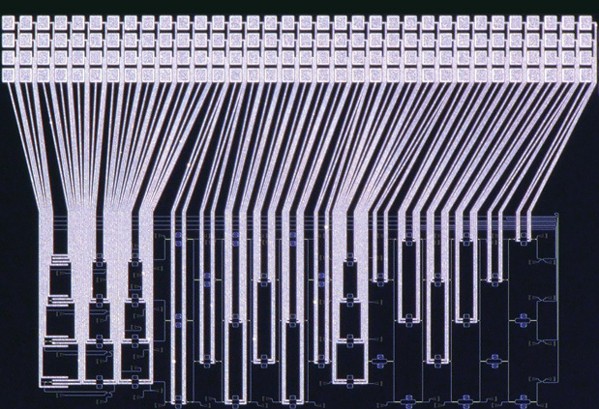A New Optical Chip Makes Light Work of Optimization Problems
As Moore’s Law stutters, computing companies are looking to develop ways to calculate using light rather than electrons. Now researchers at Hewlett Packard Labs have built one of the most complex optical chips yet, and claim that it could be used to perform optimization tasks more efficiently than regular hardware.
IEEE Spectrum reports that the team has traded electrons for light beams to build a device that features 1,052 optical components that all work together to crunch numbers.The researchers claim that the approach can be used to identify solutions to complex optimization problems more efficiently than normal chips. As an example, the team says that it will be able to crunch through the traveling salesman problem—a classic mathematical challenge that demands the calculation of the most efficient route between a number of points—far faster than its rivals.
Other optical computing techniques promise similar advantages. As we recently reported, laser-based computing approaches are being used to analyze genetic data and intelligently compress information faster than normal computers. Along with their speed gains, light-based chips could also use less energy.

Such advantages explain why chip giants like Intel are also working out how to build optical computing hardware. The Hewlett Packard Labs creation is another milepost on the road to making lighter work of the problem.
(Read more: IEEE Spectrum, “Intel Tries to Rearchitect the Computer—and Itself,” “Light Chips Could Mean More Energy-Efficient Data Centers,” “Computing with Lasers Could Power Up Genomics and AI”)
Keep Reading
Most Popular
Large language models can do jaw-dropping things. But nobody knows exactly why.
And that's a problem. Figuring it out is one of the biggest scientific puzzles of our time and a crucial step towards controlling more powerful future models.
How scientists traced a mysterious covid case back to six toilets
When wastewater surveillance turns into a hunt for a single infected individual, the ethics get tricky.
The problem with plug-in hybrids? Their drivers.
Plug-in hybrids are often sold as a transition to EVs, but new data from Europe shows we’re still underestimating the emissions they produce.
Stay connected
Get the latest updates from
MIT Technology Review
Discover special offers, top stories, upcoming events, and more.